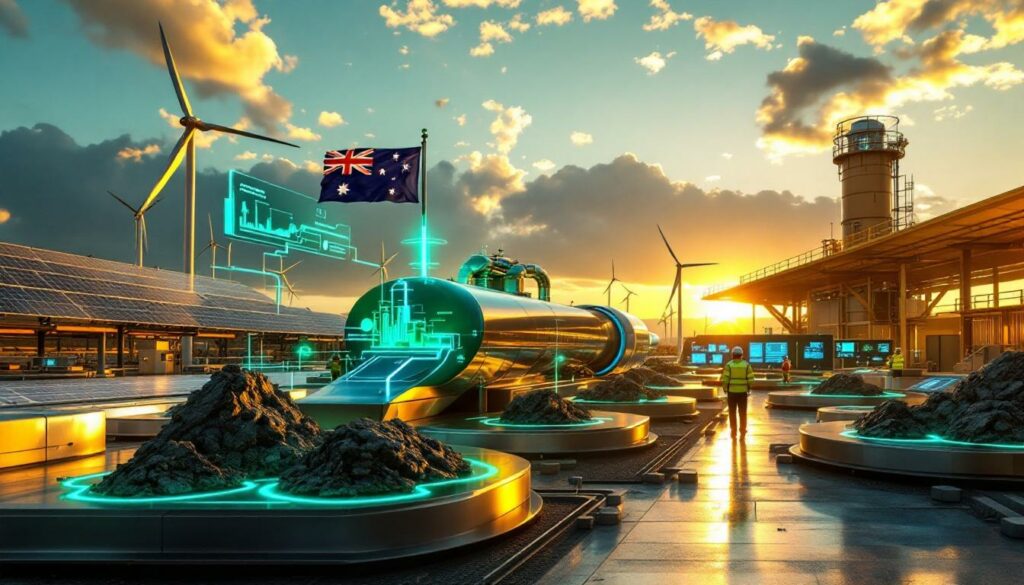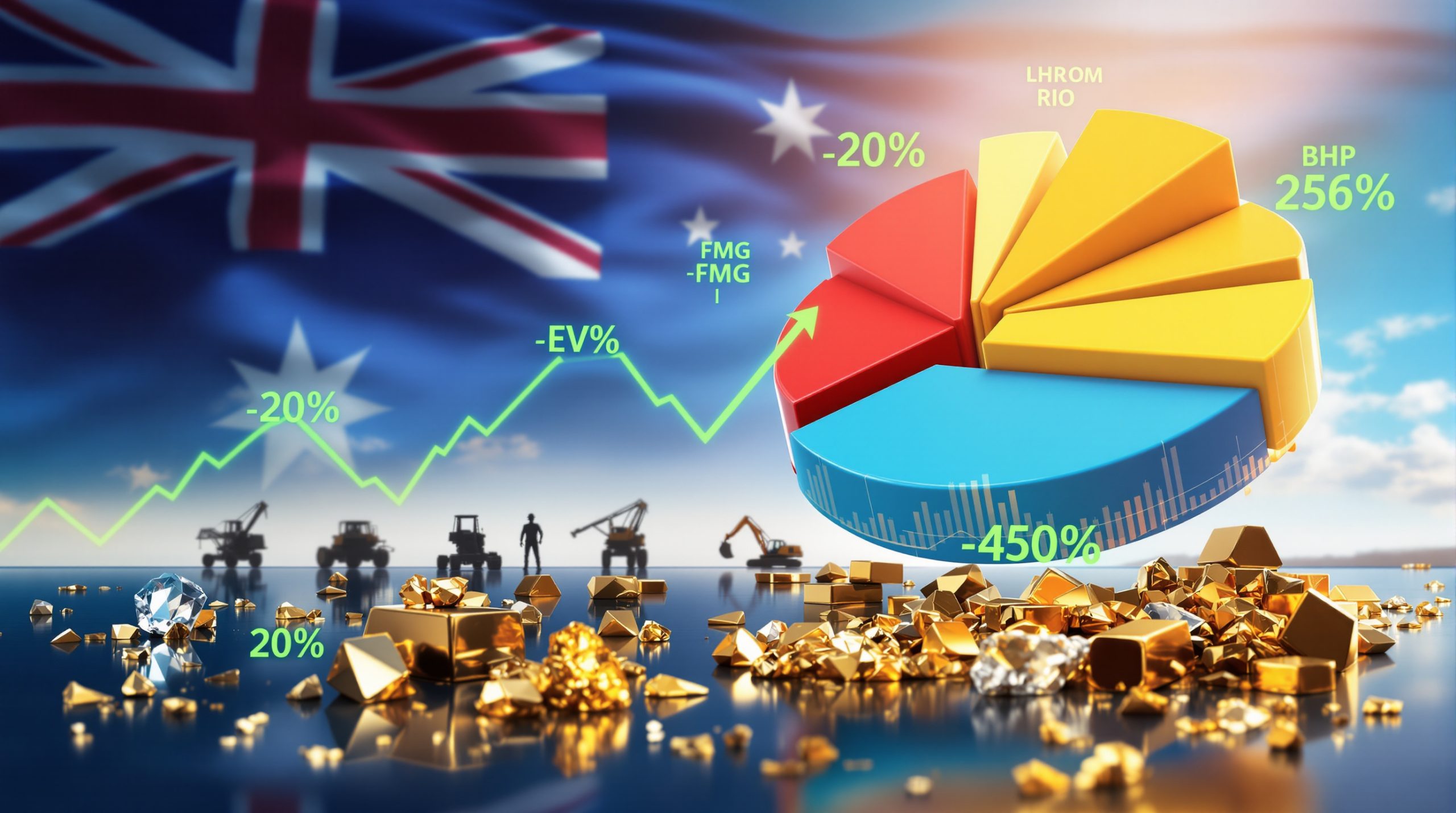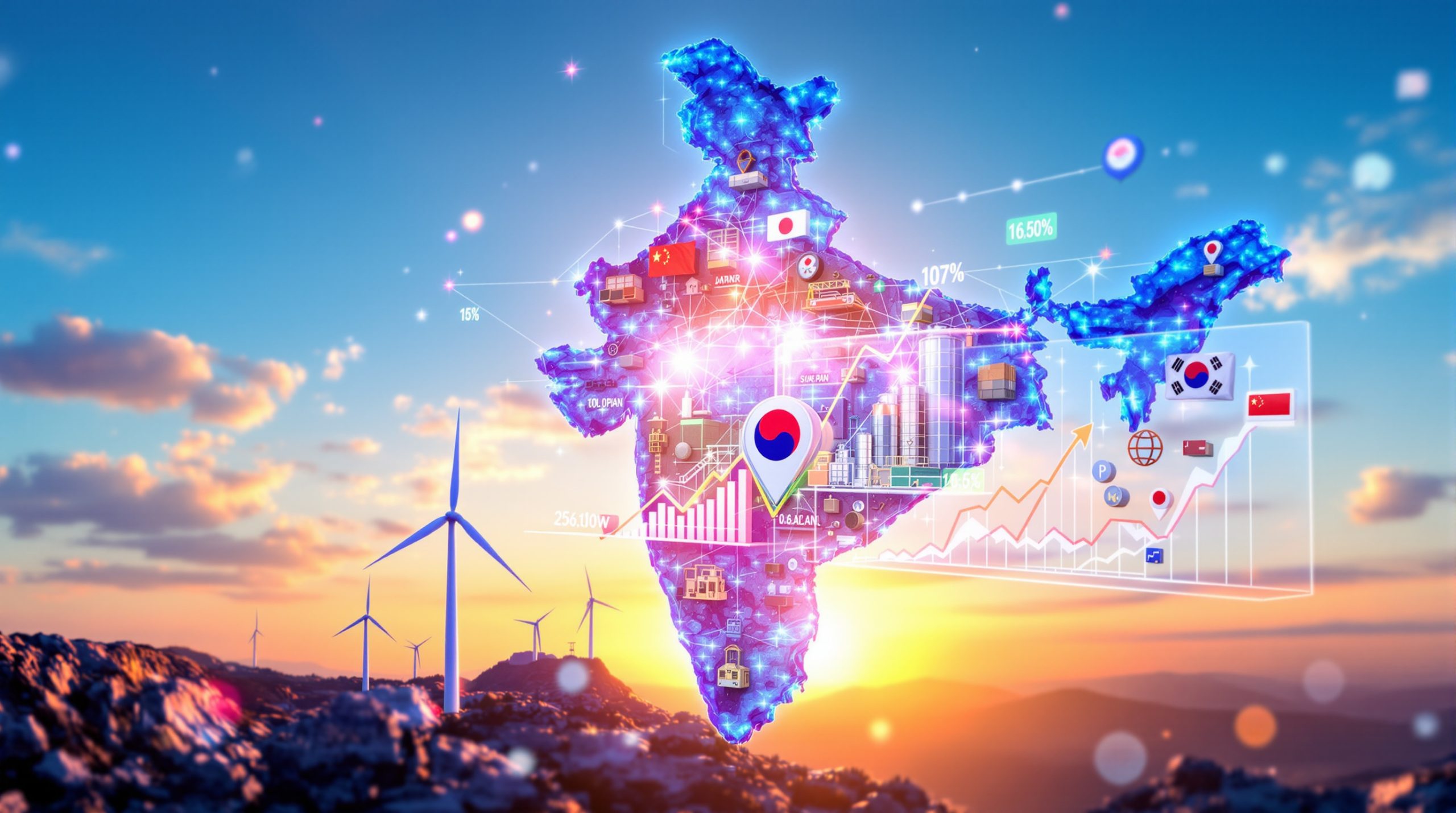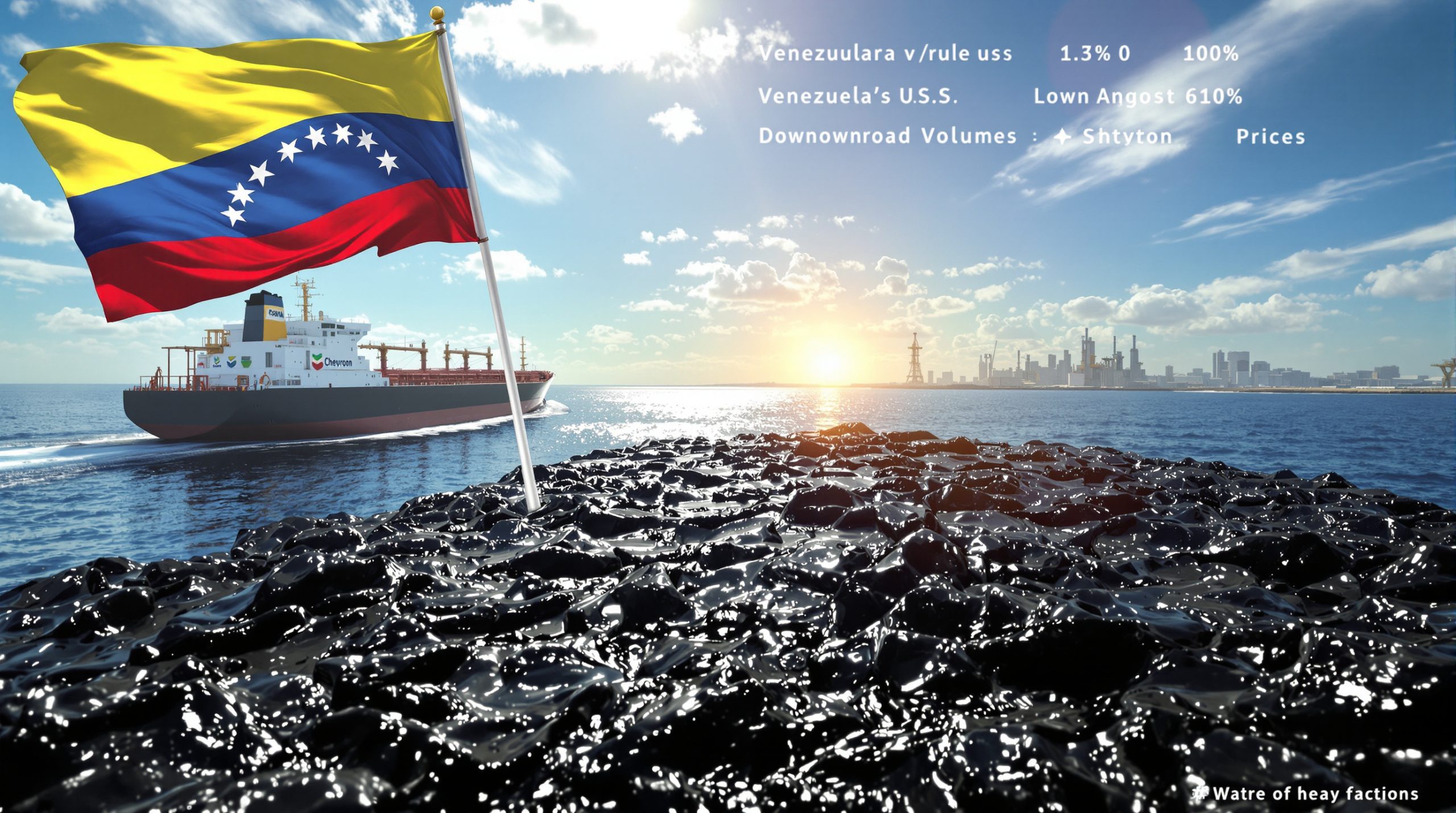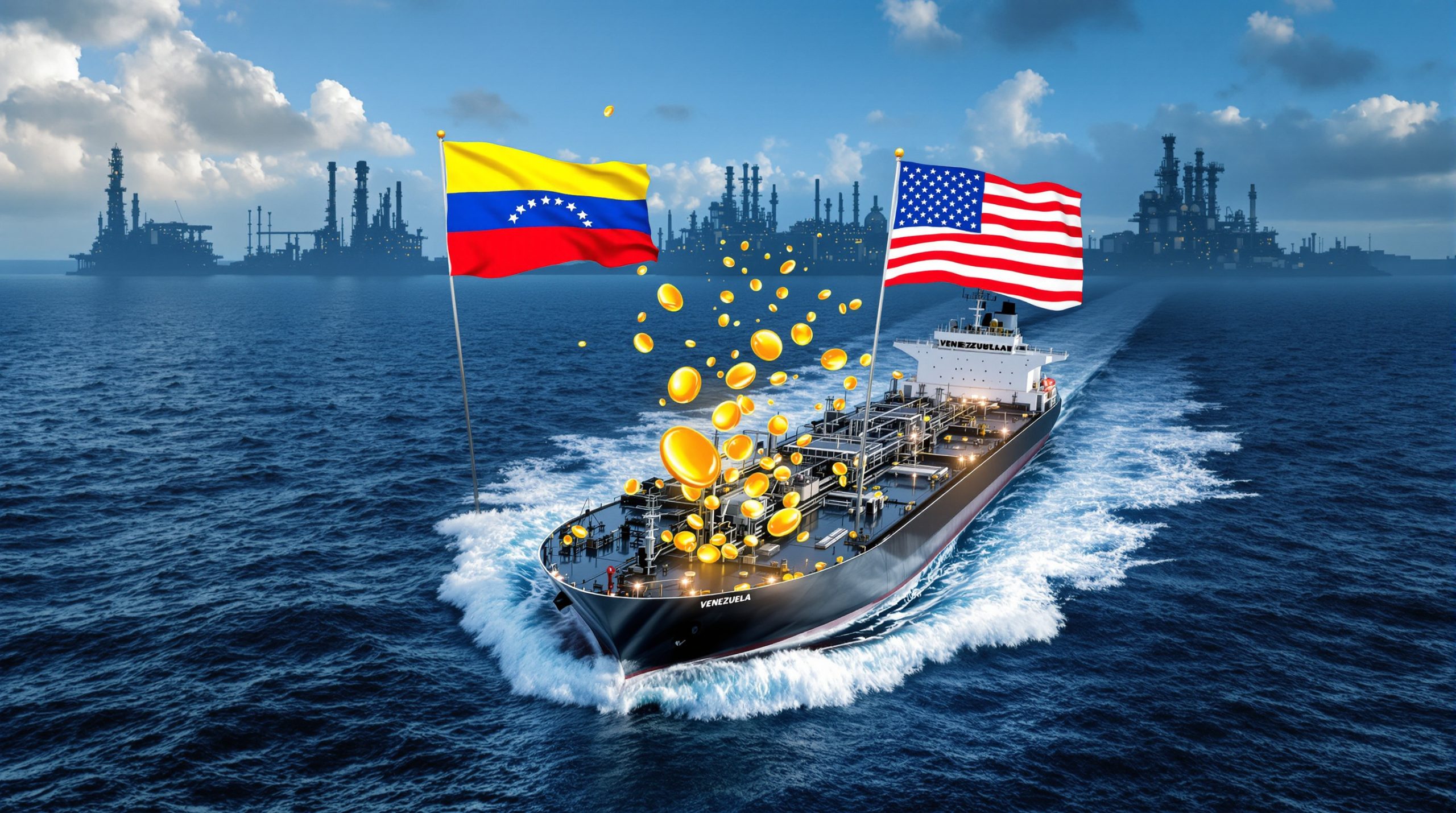What is the Mid West Green Iron Project and Why Does it Matter?
The Mid West Green Iron Project represents a pioneering collaboration in Australia's sustainable mining landscape, bringing together three key industry players with complementary strengths. This strategic partnership aims to revolutionize iron production in Western Australia by utilizing renewable energy and innovative production methods to create low-carbon iron products.
At its core, the project seeks to leverage local resources—high-grade iron ore and renewable energy—to produce commercial quantities of direct reduction iron (DRI) using green hydrogen instead of traditional coal-based processes. This approach significantly reduces carbon emissions while creating valuable products for global markets increasingly demanding environmentally responsible materials.
The Strategic Triumvirate: Key Players and Their Roles
Athena Resources (ASX:AHN)
- Primary contributor of high-grade iron ore samples from their Byro Magnetite project
- Providing ultra-high grade magnetite concentrate with unique metallurgical properties
- Strategic position as resource provider with minimal expected capital costs
- Market capitalization of approximately $18.12 million as of July 2025
- Trading at 0.8 cents per share (unchanged in recent trading)
"The quality, scale, location, and metallurgy of the Byro Magnetite Project provide a unique ability to provide the ultra-high concentrate products that are required for a regional green iron development." — Peter Jones, CEO of Athena Resources
Fenix Resources (ASX:FEX)
- Serves as Athena's largest shareholder, providing crucial financial backing
- Contributing regional logistics expertise from established operations
- Leveraging existing infrastructure connections in the Mid West region
- Recently experienced a 1.7% share price decline amid project announcements
- Brings operational know-how and market access to the partnership
Warradarge Energy
- Privately-owned Western Australian renewable energy developer
- Primary supplier of green hydrogen as the reducing gas for iron production
- Currently developing 1.5 GW of wind and solar capacity in the Mid West region
- Selected as partner due to "similar regional focus" and complementary capabilities
- Providing the renewable energy cornerstone necessary for truly green production
The collaboration is structured as an equal three-way partnership, with each company contributing their specialized expertise while sharing development responsibilities. This structure minimizes individual capital exposure while maximizing collective capabilities—a model increasingly adopted for capital-intensive green industrial projects.
How Will the Mid West Green Iron Project Transform Iron Production?
Traditional iron production relies heavily on coal-fired blast furnaces, making it one of the most carbon-intensive industrial processes globally. The Mid West Green Iron Project aims to disrupt this centuries-old approach by implementing innovative reduction technology powered by renewable energy.
The Green Iron Production Process Explained
What Makes This Iron "Green"?
- Resource efficiency: Utilization of ultra-high grade magnetite concentrate (potentially >68% Fe)
- Clean reduction: Substitution of green hydrogen for coal as the reducing agent
- Renewable power: Processing powered by Warradarge's wind and solar installations
- Circular approach: Creation of a regional resource loop minimizing transportation emissions
- Carbon reduction: Potential to eliminate up to 98% of emissions compared to conventional methods
The process begins with Athena's high-grade magnetite concentrate, which undergoes direct reduction using hydrogen produced from renewable electricity. Unlike traditional blast furnaces that use coal to remove oxygen from iron ore (creating CO₂), hydrogen-based reduction creates water vapor as its byproduct—dramatically reducing the carbon footprint.
Technical note: Direct reduction iron (DRI) technology creates metallic iron by removing oxygen at temperatures below the melting point of iron, preserving the original form of the ore while increasing its iron content.
Technical Innovation and Development Timeline
The project will progress through several critical development phases:
- Initial technical studies to validate process compatibility with Byro magnetite
- Testing of suitable green iron ore technologies using Athena's samples
- Development of commercial agreements establishing operational frameworks
- Securing foundational infrastructure rights (land, power, water, hydrogen, transport)
- Construction of production facilities and supporting infrastructure
- Commercial-scale production of premium green iron products
While specific timelines haven't been publicly disclosed, similar hydrogen-based metallurgy projects typically require 2-3 years for technical validation followed by 2-4 years for construction and commissioning.
Regional Economic and Environmental Impact
Economic Benefits for Western Australia
- Creation of specialized jobs in renewable energy, hydrogen production, and advanced metallurgy
- Development of exportable technical expertise in green metallurgical processes
- Potential premium pricing for low-carbon metals in international markets
- Diversification of the Mid West economy beyond traditional agriculture and mining
- Strengthening of Australia's position in future-focused green metals leadership
The project aligns with Western Australia's ambitions to become a global leader in green hydrogen and value-added resources, potentially attracting additional investment to the region as demand for low-carbon materials grows.
Environmental Advantages
- Substantial reduction in carbon emissions compared to conventional iron production
- Utilization of Western Australia's world-class renewable energy resources
- Minimization of waste through efficient processing of high-grade ore
- Reduced transportation impacts through regional integration of resources
- Establishment of a commercial-scale demonstration of hydrogen-based metallurgy
By proving the viability of green iron production at commercial scale, the project could accelerate electrification and decarbonisation efforts across Australia's metals sector, which currently accounts for approximately 7% of the nation's total emissions.
What Makes the Byro Magnetite Project Ideal for Green Iron Production?
The quality of input materials is crucial for efficient green iron production, making Athena's Byro Magnetite Project particularly significant to the partnership's ambitions. The project's geological and metallurgical characteristics provide several distinct advantages for hydrogen-based reduction processes.
Geological and Metallurgical Advantages
Exceptional Ore Quality
- Ultra-high grade magnetite concentrate suitable for premium applications
- Unique metallurgical properties enhancing reduction efficiency
- Consistent mineral composition enabling reliable processing outcomes
- Favorable impurity profile compared to many conventional iron ore sources
- Potential for producing specialized products for high-value market segments
Magnetite concentrates from the Byro project can potentially achieve iron content levels significantly higher than traditional hematite ores from the Pilbara region. This higher grade reduces energy requirements during the reduction process and improves the quality of the final product.
"The quality, scale, location, and metallurgy of the Byro Magnetite Project provide a unique ability to provide the ultra-high concentrate products that are required for a regional green iron development." — Peter Jones, CEO of Athena Resources
Strategic Location Benefits
- Proximity to Warradarge's renewable energy developments in the Mid West
- Reduced logistics costs through regional integration of resources
- Access to existing infrastructure with potential for shared expansion
- Favorable position for both domestic processing and export markets
- Alignment with regional development initiatives and priorities
The project's location in Western Australia's Mid West region creates natural synergies with Warradarge's renewable energy developments and Fenix's logistics capabilities, allowing for an integrated approach that minimizes transportation requirements and associated emissions.
What Are the Financial Implications for Investors?
The Mid West Green Iron Project presents a distinctive investment proposition that differs significantly from traditional resource projects. With its three-way partnership structure and focus on value-added processing, the financial dynamics offer both unique opportunities and considerations for investors.
Investment Outlook and Project Economics
Capital Requirements and Structure
- Equal distribution of development responsibilities among the three partners
- "Very few expected capital costs" for Athena Resources according to company statements
- Leveraging of existing assets and capabilities to minimize new capital expenditure
- Potential for staged development to manage investment risk and prove concepts
- Opportunity for future capital raising based on successful milestone achievements
The partnership structure strategically distributes financial commitments, with Athena contributing its resource base, Fenix providing logistics and financial backing, and Warradarge delivering renewable energy infrastructure. This approach minimizes the capital burden on any single participant while maximizing collective capabilities.
Market Positioning and Competitive Advantages
- First-mover advantage in Western Australian green iron production
- Potential premium pricing for certified low-carbon metallurgical products
- Vertical integration from ore to energy within the partnership structure
- Reduced exposure to future carbon pricing and environmental regulations
- Alignment with global ESG investment criteria and sustainable finance requirements
For investors, the project represents exposure to an emerging high-growth segment within the resources sector. As global steelmakers increasingly seek lower-carbon inputs to meet their own emissions targets, suppliers of green iron products may command significant price premiums over conventional materials.
Investment consideration: While the project offers significant potential upside, investors should note that green metallurgy technologies remain in relatively early commercial stages, with associated technological and market development risks.
How Does This Project Fit into Australia's Green Energy Transition?
Australia's resource-intensive economy faces significant challenges in meeting national and international decarbonization commitments. The Mid West Green Iron Project represents a practical pathway for reducing emissions in one of the hardest-to-abate sectors—metallurgical processing—while maintaining economic competitiveness.
Strategic Alignment with National Priorities
Contribution to Decarbonization Goals
- Support for Australia's emissions reduction targets (43% by 2030, net-zero by 2050)
- Demonstration of viable pathways for industrial sector transformation
- Template for future green industrial developments across resource-rich regions
- Potential emissions reduction of millions of tonnes annually at commercial scale
- Enhancement of Australia's climate credentials in international markets
The project aligns with Australia's energy transition strategy and the Western Australian Renewable Hydrogen Strategy, both of which identify green steel and iron production as priority applications for renewable hydrogen.
Innovation and Technology Development
- Practical application of green hydrogen in metallurgical processes
- Development of Australian expertise in sustainable resource processing
- Potential for technology transfer to other mining industry innovation
- Creation of knowledge clusters around green metallurgy in Western Australia
- Opportunities for research collaboration with Australian universities and CSIRO
By demonstrating hydrogen-based metallurgy at commercial scale, the project could accelerate Australia's transition from a primarily raw materials exporter to a producer of value-added green products—capturing more of the value chain while reducing environmental impacts.
What Challenges Must the Project Overcome?
Despite its promising potential, the Mid West Green Iron Project faces several significant hurdles that must be addressed to achieve commercial success. These challenges span technological, economic, and market dimensions.
Technical and Commercial Hurdles
Technology Readiness Assessment
- Current hydrogen-based DRI technologies remain at relatively early commercial stages
- Scale-up requirements from laboratory testing to industrial production
- Process optimization for energy efficiency and product consistency
- Integration of variable renewable energy with continuous metallurgical processes
- Performance validation under Australian operating conditions and with local ores
The project will need to conduct extensive testing with Athena's magnetite samples to validate compatibility with existing hydrogen reduction technologies and potentially develop customized approaches to maximize efficiency with this specific ore type.
Market Development Considerations
- Establishing price premiums for green iron products in competitive markets
- Development of certification standards for carbon intensity of metallurgical products
- Competition from other low-carbon iron and steel initiatives globally
- Regulatory frameworks and carbon accounting methodologies still evolving
- Securing long-term offtake agreements with environmentally conscious customers
While demand for green steel is growing, particularly in Europe where the Carbon Border Adjustment Mechanism will impose costs on high-carbon imports, the premium customers are willing to pay for low-carbon alternatives remains uncertain and will significantly impact project economics.
Market reality: The success of green iron production depends not only on technical feasibility but also on customers' willingness to pay premiums for environmentally superior products—a market dynamic still developing globally.
What's Next for the Mid West Green Iron Project?
The partnership has outlined a clear development pathway that will progressively advance the project from concept to commercial reality. Each phase will build upon previous successes while addressing key technical and commercial considerations.
Upcoming Milestones and Development Pathway
Near-Term Activities
- Commencement of targeted technical studies on process compatibility
- Securing of foundational rights for project development (land, utilities, access)
- Initial testing of Athena's magnetite samples with hydrogen reduction technology
- Development of detailed commercial agreements between the three partners
- Engagement with regulatory authorities, stakeholders, and potential customers
These initial activities will establish the technical and commercial foundation for the project while minimizing capital commitments until key concepts are validated.
Long-Term Vision and Expansion Potential
- Pathway to commercial-scale production of premium green iron products
- Potential for integration with downstream steel manufacturing capabilities
- Opportunities for expansion based on successful demonstration and market reception
- Creation of a green industrial hub in Western Australia's Mid West region
- Template for replication across other resource-rich regions in Australia
The long-term vision extends beyond simply producing green iron to potentially establishing Australia as a global leader in low-carbon metallurgy, creating substantial economic value while contributing to global decarbonization efforts.
FAQ: Mid West Green Iron Project
What is direct reduction iron (DRI) and how does it differ from traditional iron production?
Direct reduction iron is produced by removing oxygen from iron ore using a reducing gas (typically derived from natural gas or hydrogen) rather than the traditional blast furnace method that uses coke. This process operates at lower temperatures (approximately 800-1000°C versus 1500°C for blast furnaces) and can significantly reduce carbon emissions, especially when powered by renewable energy and using green hydrogen as the reducing agent.
Unlike blast furnace production, which creates liquid iron that must be immediately processed into steel, DRI creates a solid metallic iron product that can be stored, transported, and used in electric arc furnaces for steelmaking. This flexibility offers significant logistical and operational advantages.
How does green hydrogen contribute to sustainable iron production?
Green hydrogen, produced through electrolysis powered by renewable energy, serves as a clean reducing agent that removes oxygen from iron ore without carbon emissions. The chemical reaction is:
Fe₂O₃ + 3H₂ → 2Fe + 3H₂O
This reaction produces only water vapor as a byproduct, in stark contrast to coal-based reduction which generates significant CO₂ emissions. When the electrolysis process is powered by renewable energy, the entire production chain can operate with minimal carbon footprint.
The Warradarge renewable energy development (1.5 GW of wind and solar) will provide the electricity required for green hydrogen production, creating a fully integrated low-carbon production system.
What makes the Mid West region of Western Australia suitable for this project?
The Mid West region offers a unique combination of high-grade iron ore resources, abundant renewable energy potential (particularly wind and solar), existing infrastructure, and proximity to export facilities. This geographical advantage enables the creation of an integrated green iron production hub with minimized transportation requirements.
Western Australia's Mid West experiences world-class solar irradiance and consistent coastal wind resources, making it ideal for reliable renewable energy generation. Combined with Athena's high-grade magnetite resources and existing logistics infrastructure developed by companies like Fenix, the region provides all the essential elements for successful green iron production.
How might this project impact Australia's position in global iron markets?
By pioneering commercial-scale green iron production, Australia could establish leadership in premium, low-carbon metallurgical products. This would diversify the country's export offerings beyond raw materials, potentially capturing higher margins while securing market share in an increasingly carbon-conscious global economy.
As major steelmaking nations implement carbon pricing and border adjustment mechanisms, Australian producers of conventional iron ore may face decreasing competitiveness unless they can offer lower-carbon alternatives. The Mid West Green Iron Project positions Australia to maintain its strategic importance in global steel supply chains while adapting to changing environmental requirements.
What timeline can investors expect for project development and production?
While specific timelines haven't been publicly disclosed, similar projects typically involve 2-3 years of technical studies and pilot testing, followed by 2-4 years of construction and commissioning before commercial production. The partnership's focus on securing foundational rights and conducting technical studies suggests they are in the early planning stages of development.
Investors should anticipate a phased approach, with incremental milestones providing validation of concepts before major capital commitments. Near-term catalysts will likely include results from technical studies, announcement of specific technology selections, and formalization of commercial agreements between the partners.
Want to Invest in the Next Major Mineral Discovery?
Discovery Alert instantly notifies investors of significant ASX mineral discoveries using its proprietary Discovery IQ model, turning complex mineral data into actionable insights. Understand why historic discoveries can generate substantial returns by visiting Discovery Alert's dedicated discoveries page and begin your 30-day free trial today to position yourself ahead of the market.
